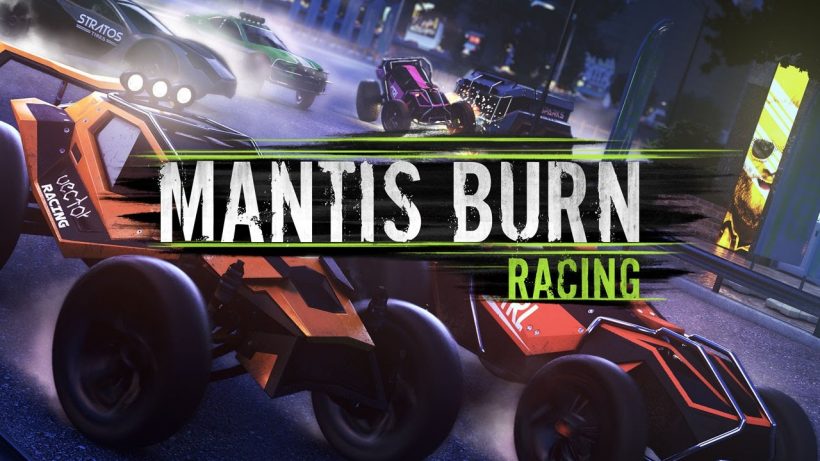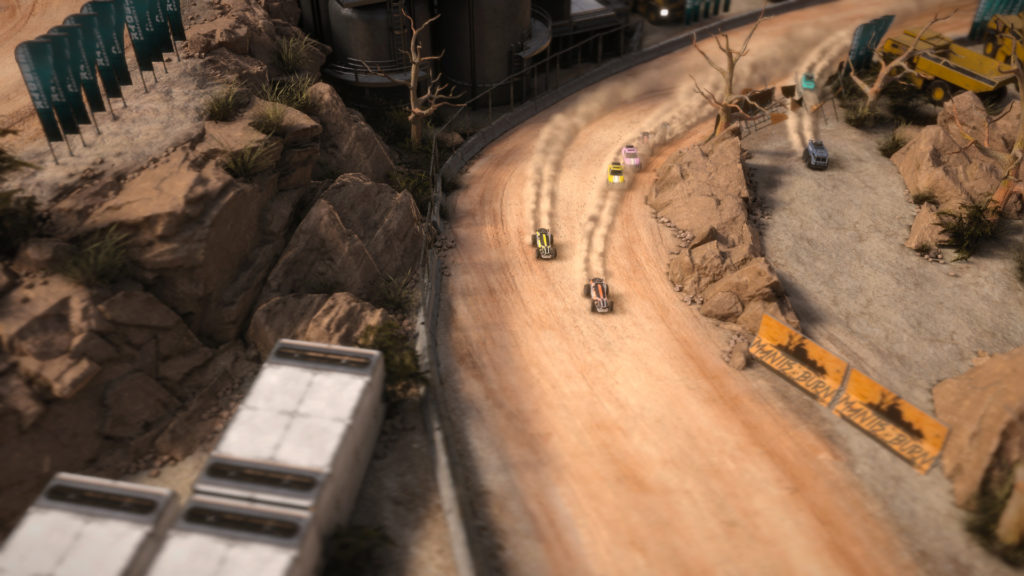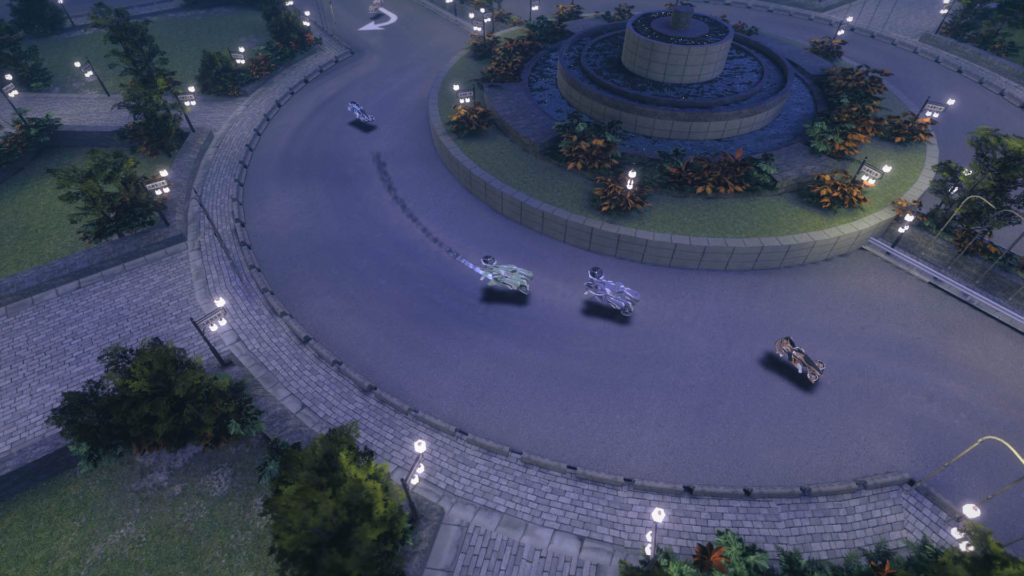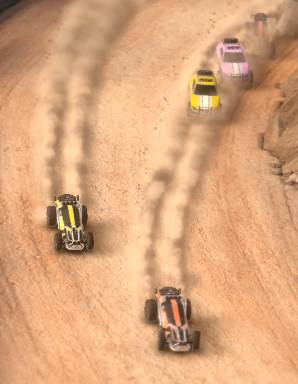[Review] Mantis Burn Racing

Developer: VooFoo Studios Publisher: VooFoo Studios
Release Date: 11.23.17
Mantis Burn Racing from Voofoo Studios is the latest racing game out for the Nintendo Switch. Boasting some of the most realistic and responsive steering, your cars handle like a dream, although the game does feel like you’re trying to accelerate an RC car with a low battery. At first, anyways.
Mantis Burn Racing takes a lot of inspiration from the classic 2D, overhead racing games of yesteryear. Tracks are comprised of various twists and turns, and success in the race will be dependent on your ability to recognize those moments when to best brake, accelerate, and use your boost. To use your boosts, you’ll need enough experience. To get experience, you must earn it.
This is one of the more interesting aspects of Mantis Burn Racing. Where most games simply give you a boost gauge that can be utilized at a button press, it is usually available from the beginning of the race, and is generally just on a timer or limited in a realistic fashion (how many bottle of NO2 are hooked up to your customized car?). Mantis Burn Racing makes you work for the boost, and it does this by rewarding experience for having a nice drift, getting good air off of a hill, and for passing the other cars- you’re rewarded more for overtaking them through curves.
On top of being a standard racing game that boasts local and online multiplayer (with cross-play!), during the career mode you are given the ability to unlock new vehicles, and you can upgrade your current vehicle in the meantime. This includes suspension, engine, gearbox, tires, and boost.
Suspension deals with handling
Engine deals with overall power (which makes your car faster and a little harder to handle, so it’s a good idea to also upgrade your suspension and tires to mitigate this)
Gearbox deals with acceleration and recovery from turns.
Tires deal with traction.
Boost increases the length that you can boost for, and a reduction in the amount of experience necessary to reactivate.

You are given the choice between a couple of colors for both your car and boost vapor, but it isn’t on the same level of customization that a Need for Speed game might offer. The colors for both the cars and boost looks cool in the garage, but it’s rather flat during actual gameplay.
I really only have two main gripes with the game, and they’re nothing that really affects how well made the game is. When I first started to play the game, as I mentioned above, I felt like my car was just crawling around the track, even with accelerator maxed out on a straightaway (with boost!). After I started unlocking upgrades, however, the car seemed to be more responsive and a little quicker, even when I wasn’t upgrading the engine or gearbox. So, it stopped being an issue, and started becoming a testament to the cleverness of design in the game. You start off with a less than mediocre car, and every time you upgrade it, the experience becomes incrementally more enjoyable. Honestly, it’s a very realistic way to communicate minor upgrades added to a racing vehicle over time. If you only have the ability to make one improvement at a time, it’s much harder to notice the minor improvements overall, but you can feel them just enough to know that it was worth it.
This slow starting point also paces out the difficulty of the game in such a way that you will probably be unsuccessful in your first couple of races. It forces you to replay the races over and over so that by the time you do earn your upgrades, you’re better equipped to manage your now faster vehicle as a result of mastering it at a lower speed with poor suspension. So, something that initially hit me as a flaw in the game turned out to be a rewarding experience when I continued to play.
My other issue, never really resolved itself. So, I’ll start this off with the positive side of things. The tracks are very well designed, and they feel like a lot of thought was put into how you would have to approach the track and interact with the AI cars when you needed to. However, the design choice to make most of them look so bland and similar had me at most times feeling like I was doing the same race over and over again. There would always be some interesting part of the track with turns stringed together in a unique way, or a momentary trip over different colored terrain or through a tunnel…but there just wasn’t enough variance of how the courses looked from one to the next that I wasn’t questioning whether I had actually chosen the next race, or was simply replaying the previous one.

Last, and certainly not least, is how well the developers integrated HD rumble into Mantis Burn Racing. When the Switch was first revealed, and all of it’s details were showcased., this was the rumored feature that I was most excited about (well, besides the hybrid nature of the console itself). It also seems to get the least amount of attention, other than negative attention when a game’s devs overdo it a little bit.
Anyways, Voofoo has done quite well figuring out how best to utilize the HD Rumble feature in Mantis Burn Racing. When you drift, you get a slight vibration on the side that most of the traction is on, and it moves in a wave from right to left as you go through the turner. If a car bumps into you, the controller gives an intense rumble on that side and position (it will rumble not only on the left side, but also be in the bottom(back) or top (front). Landing from a jump will result in an intense rumble on the appropriate side and front/back position as well. This makes for a very enjoyable experience, and highlights why the Nintendo Switch is often the best place to experience these multi-platform releases that integrate the feature so well.





Follow VooFoo Studios
Get Mantis Burn Racing today!






